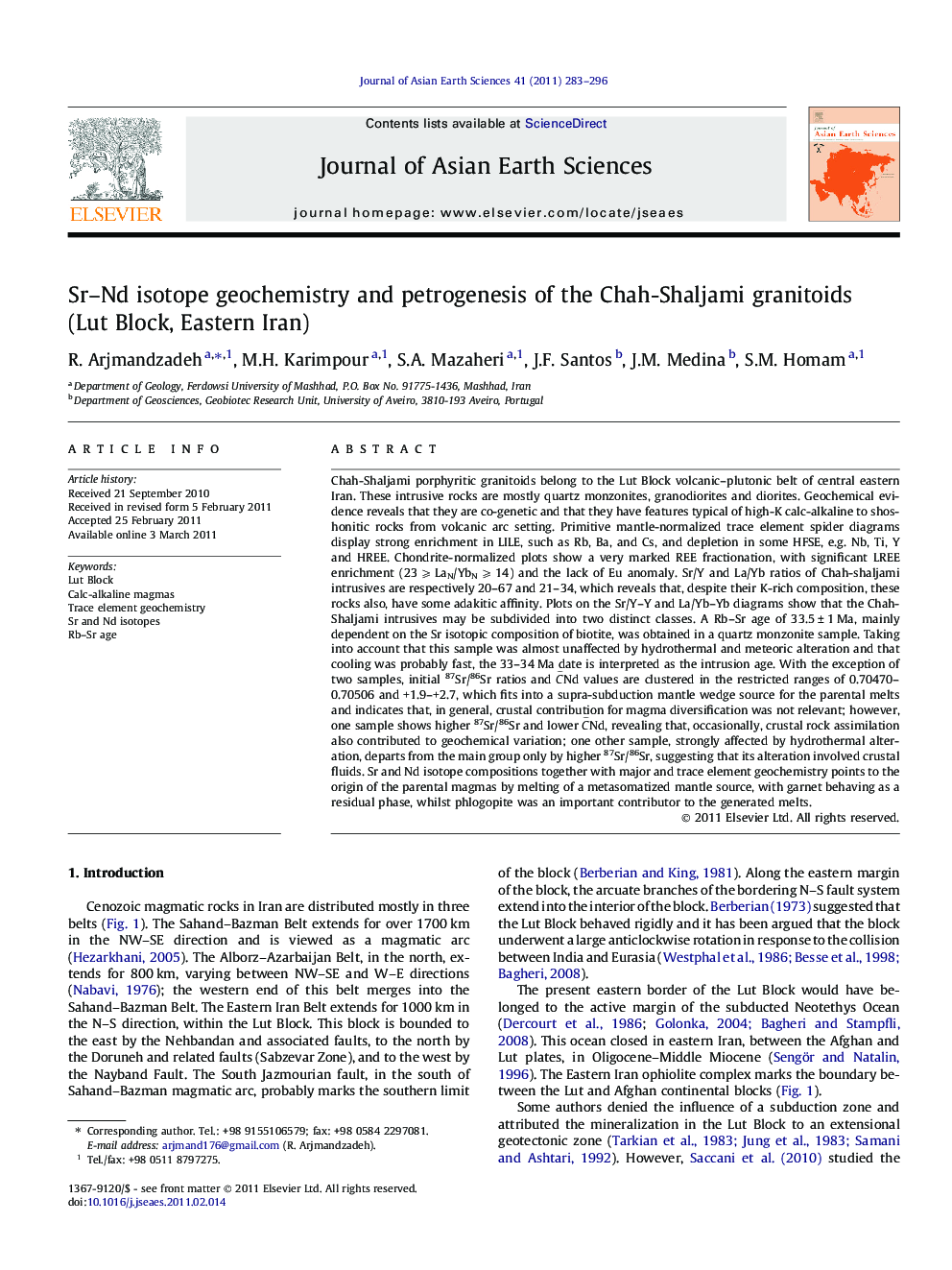| کد مقاله | کد نشریه | سال انتشار | مقاله انگلیسی | نسخه تمام متن |
|---|---|---|---|---|
| 4731816 | 1356823 | 2011 | 14 صفحه PDF | دانلود رایگان |

Chah-Shaljami porphyritic granitoids belong to the Lut Block volcanic–plutonic belt of central eastern Iran. These intrusive rocks are mostly quartz monzonites, granodiorites and diorites. Geochemical evidence reveals that they are co-genetic and that they have features typical of high-K calc-alkaline to shoshonitic rocks from volcanic arc setting. Primitive mantle-normalized trace element spider diagrams display strong enrichment in LILE, such as Rb, Ba, and Cs, and depletion in some HFSE, e.g. Nb, Ti, Y and HREE. Chondrite-normalized plots show a very marked REE fractionation, with significant LREE enrichment (23 ⩾ LaN/YbN ⩾ 14) and the lack of Eu anomaly. Sr/Y and La/Yb ratios of Chah-shaljami intrusives are respectively 20–67 and 21–34, which reveals that, despite their K-rich composition, these rocks also, have some adakitic affinity. Plots on the Sr/Y–Y and La/Yb–Yb diagrams show that the Chah-Shaljami intrusives may be subdivided into two distinct classes. A Rb–Sr age of 33.5 ± 1 Ma, mainly dependent on the Sr isotopic composition of biotite, was obtained in a quartz monzonite sample. Taking into account that this sample was almost unaffected by hydrothermal and meteoric alteration and that cooling was probably fast, the 33–34 Ma date is interpreted as the intrusion age. With the exception of two samples, initial 87Sr/86Sr ratios and C̵Nd values are clustered in the restricted ranges of 0.70470–0.70506 and +1.9–+2.7, which fits into a supra-subduction mantle wedge source for the parental melts and indicates that, in general, crustal contribution for magma diversification was not relevant; however, one sample shows higher 87Sr/86Sr and lower C̵Nd, revealing that, occasionally, crustal rock assimilation also contributed to geochemical variation; one other sample, strongly affected by hydrothermal alteration, departs from the main group only by higher 87Sr/86Sr, suggesting that its alteration involved crustal fluids. Sr and Nd isotope compositions together with major and trace element geochemistry points to the origin of the parental magmas by melting of a metasomatized mantle source, with garnet behaving as a residual phase, whilst phlogopite was an important contributor to the generated melts.
► High-K calc-alkaline to shoshonitic rocks from volcanic arc setting.
► Enrichment in LILE, such as Rb, Ba, and Cs, and depletion in some HFSE, e.g. Nb, Ti, Y.
► Whole rock-plagioclase-biotite isochron of 33.6 ± 0.94 My.
► Initial 87Sr/86Sr ratios and C̵Nd values fit into a supra-subduction mantle wedge source.
► Two-sided asymmetric subduction between the Lut and Afghan blocks.
Journal: Journal of Asian Earth Sciences - Volume 41, Issue 3, 25 May 2011, Pages 283–296